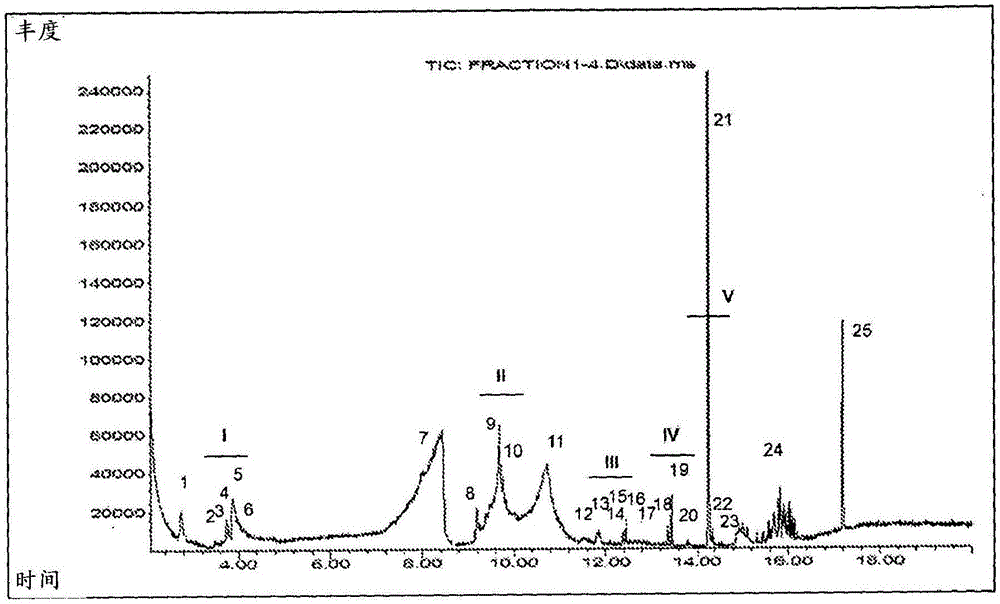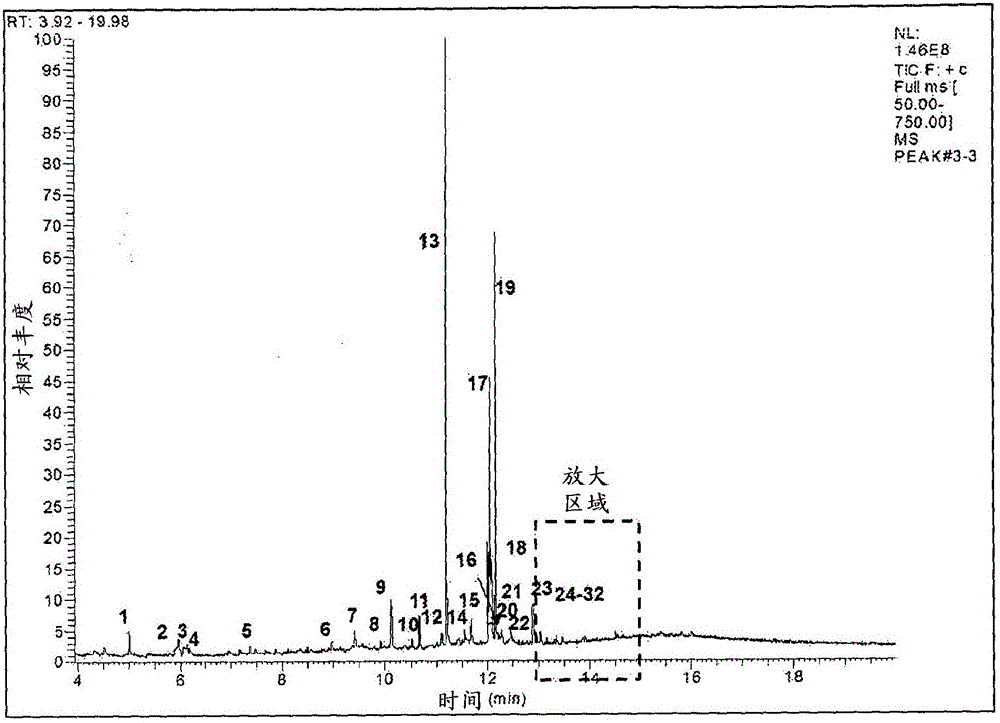Composition for detection and treatment of bed bugs
A composition and bed bug technology, which can be applied in the directions of trapping or killing insect devices, animal repellents, plant growth regulators, etc., and can solve problems such as bed bug infestation
- Summary
- Abstract
- Description
- Claims
- Application Information
AI Technical Summary
Problems solved by technology
Method used
Image
Examples
Embodiment 1
[0076] Pheromone composition from bedbug excreta was analyzed by GC / MS (Gas Chromatography / Mass Spectrometry). To obtain this sample, about 10 pieces of fecal-contaminated filter paper for colony maintenance described above were cut into 1 cm strips and soaked in 80 mL of methanol overnight to extract pheromones aggregated by bedbugs. Methanol was decanted into a 100 mL glass jar and evaporated under a gentle stream of nitrogen. After decanting, an additional 80 mL of methanol was added to the filter paper strip, and this process was repeated 3 more times. in 4mL H 2 Approximately 90 mg of the dried material was reconstituted in O and filtered through a Millex-HV, 0.45 μm PVDF filter disc (obtained from Millipore Corp. of Bedford, MA) to remove any undissolved material. The filtrate was then loaded onto a C18 Sep-Pak column (obtained from Waters, Inc. of Milford, MA) and eluted using 2 mL aliquots of increasing polarity in methanol-water, starting with 100% water and ending ...
Embodiment 2
[0082] Bedbug excreta were collected and separated into fractional groups using liquid chromatography. The effectiveness of each set of components to attract bedbugs was tested as described in Example 4. The most efficient group was further analyzed using GC / MS.
[0083] GC / MS conditions are as follows:
[0084] Column: ZB-5MS, 30m, 0.25mm, 0.25μm membrane
[0085] Initial temperature: 60°C (2min hold)
[0086] Final temperature: 320°C (10min hold)
[0087] Heating rate: 20°C / min
[0088] Injection: 2 μl
[0089] Syringe: PTV splitless
[0090] Scanning: 50-750amu
[0091] Samples were analyzed without dilution, both as such and derivatized with BSTFA (bistrimethylsilyltrifluoroacetamide).
[0092] Figure 2A Results from initial separations are shown, with groups of components indicated as 1-3. exist Figure 2B (sample injected as received), 2C (in Figure 2B Further isolated group 3 is shown in 2D (derivatized sample, 5-9 min), and 2E (derivatized sample, 8.5-14 ...
Embodiment 3
[0097] The extract obtained in Example 1 was tested for its ability to increase the efficacy of insecticides and to increase the time spent on insecticide-treated surfaces. Bedbugs generally avoid resident on insecticide-treated surfaces. It is hypothesized that the extract would keep the bugs on the surface longer.
[0098] Experimental field setup: A circular field with a diameter of 20 cm as previously described by Olson et al. (2009) was used for the analysis. Each field contained two 25mm glass microfiber filter discs fixed to the field approximately 10 cm apart ( Grade GF / A, obtained from GE Healthcare in Piscataway, NJ). In each test round, one disc was treated and the other was left untreated. Treated discs were treated with insecticide or insecticide+extract.
[0099] To measure the time spent on the treated surface, a bedbug was introduced into the field and its movement was recorded over a 4-hour period. Calculate the total amount of time spent on / off the trea...
PUM
 Login to View More
Login to View More Abstract
Description
Claims
Application Information
 Login to View More
Login to View More - R&D
- Intellectual Property
- Life Sciences
- Materials
- Tech Scout
- Unparalleled Data Quality
- Higher Quality Content
- 60% Fewer Hallucinations
Browse by: Latest US Patents, China's latest patents, Technical Efficacy Thesaurus, Application Domain, Technology Topic, Popular Technical Reports.
© 2025 PatSnap. All rights reserved.Legal|Privacy policy|Modern Slavery Act Transparency Statement|Sitemap|About US| Contact US: help@patsnap.com



